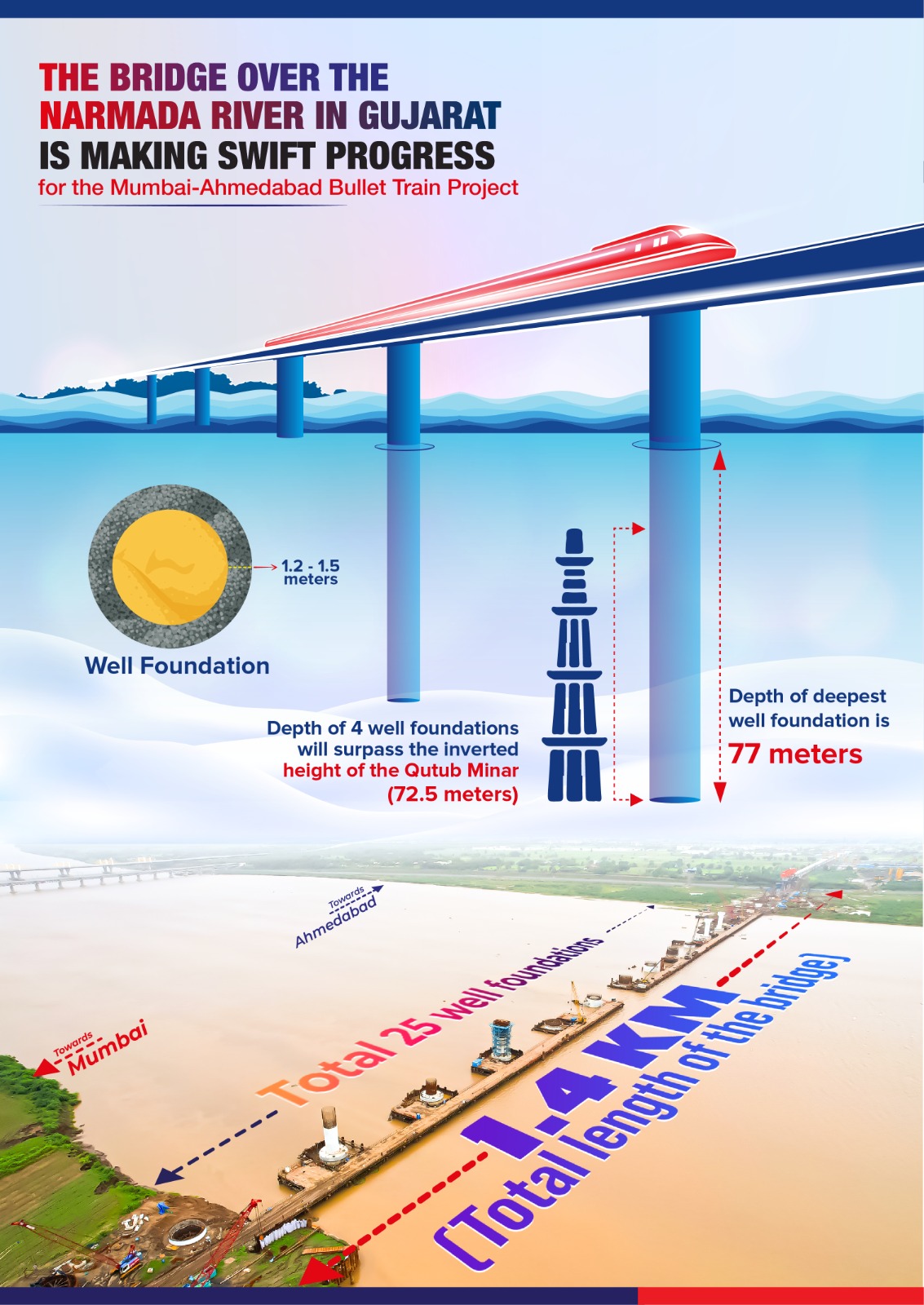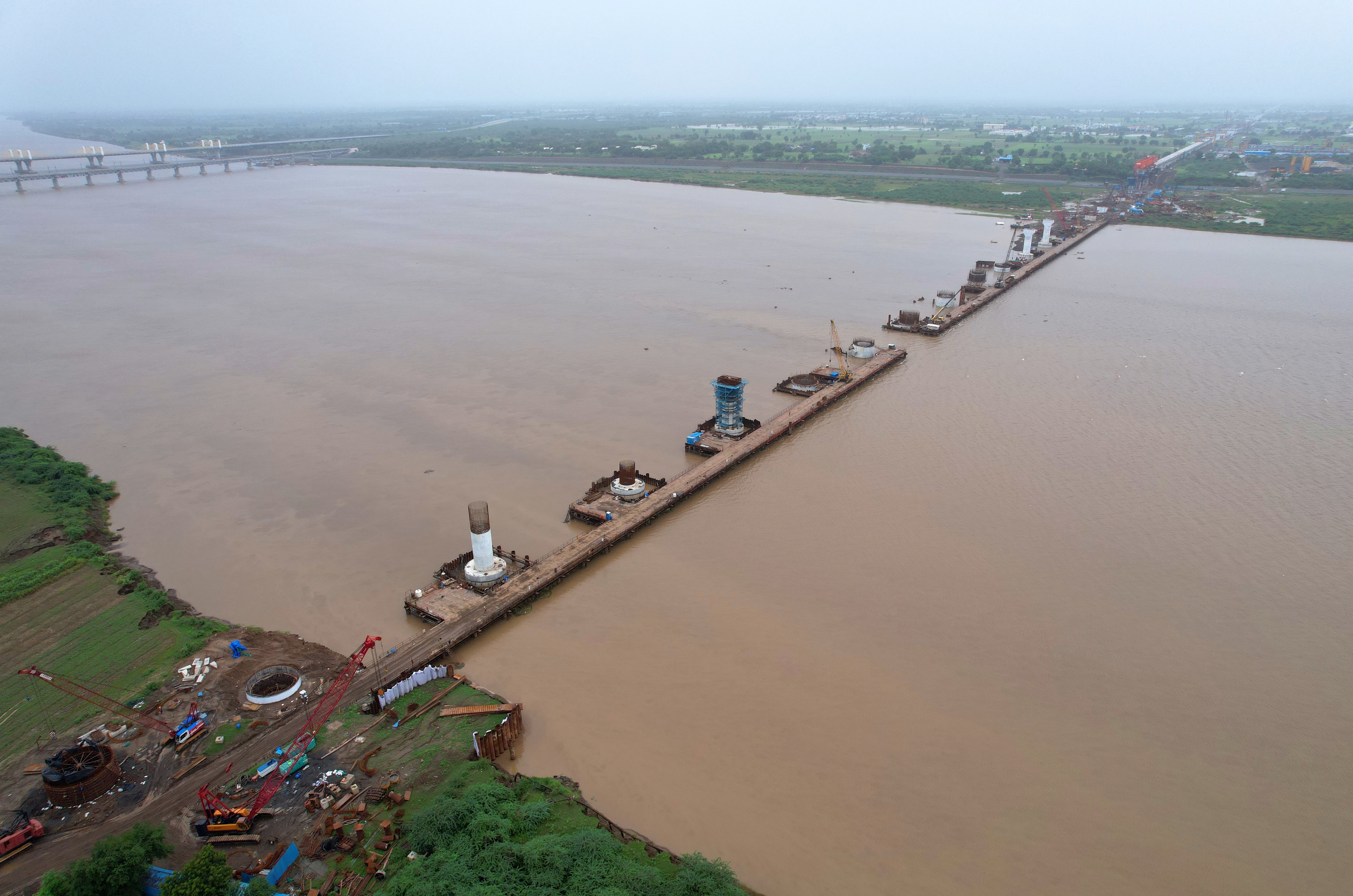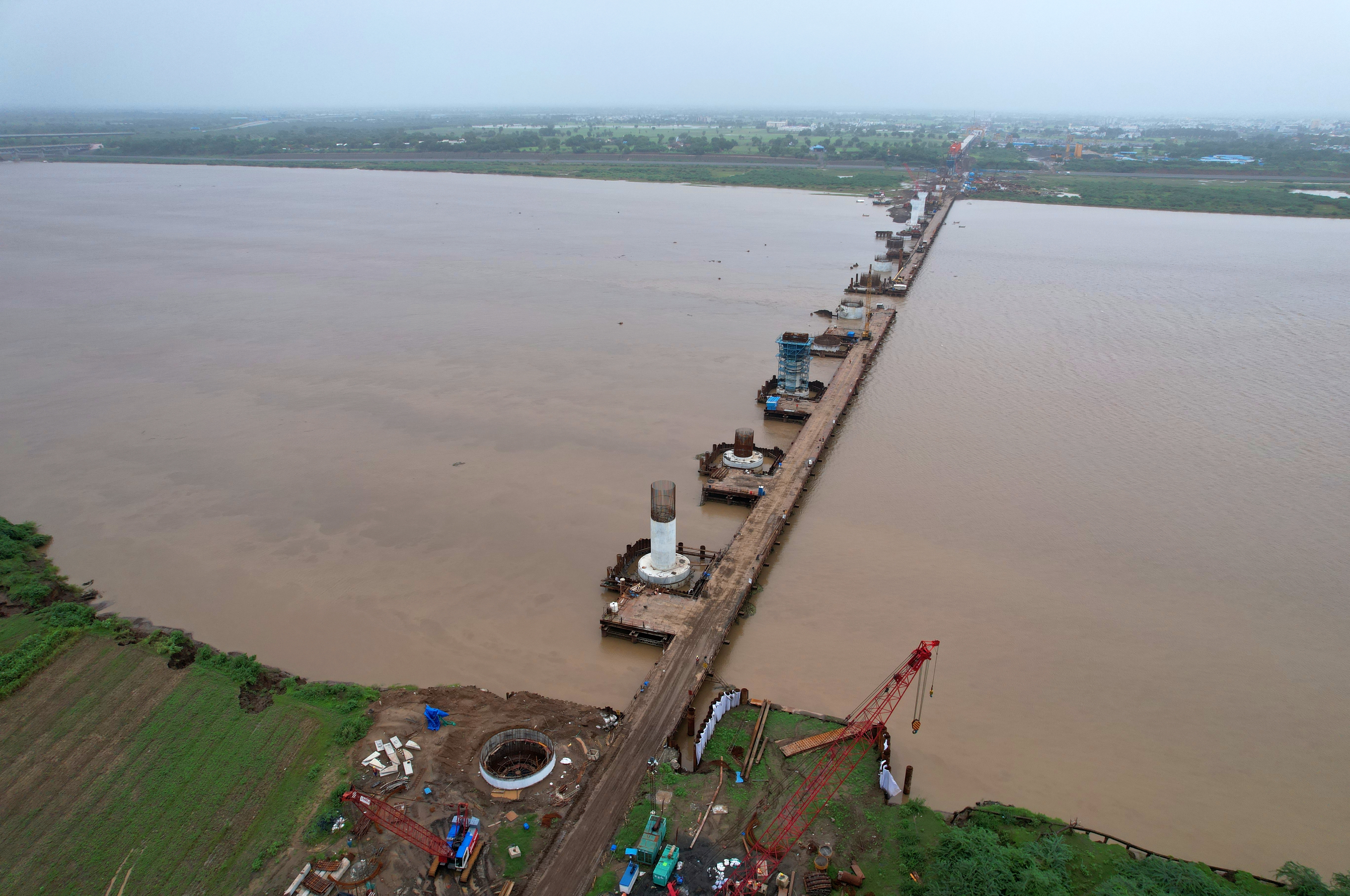Bullet train project: 19 well foundations out of 25 completed for Narmada River bridge in Gujarat
August 24, 2024
Narmada: The Mumbai-Ahmedabad Bullet Train corridor will pass over the Narmada River in the state of Gujarat. A 1.4 km-long bridge on the Narmada River for the Bullet Train project, situated between the Surat and Bharuch Bullet Train stations, is under construction. This is the longest river bridge in the Gujarat portion of the project.
The bridge is being constructed on well foundations. A well foundation is a type of deep foundation situated in rivers used to support heavy structures such as bridges. It consists of a hollow, cylindrical structure that is sunk into the ground to a desired depth to provide stability and load-bearing capacity. Well foundations are one of the oldest and most effective foundation types for railways, highways, bridges/viaducts over wide rivers. This method is often used in areas with deep and unstable river beds where other foundation types are not feasible.
The Narmada HSR bridge consists of 25 nos. of well foundations. Five (05) nos. of wells are more than 70 meters deep and the deepest well foundation (well cap top to founding level of well) in Narmada River is 77.11 meters, and the depth of other well foundations in the river is around 60 meters. 4 nos. of well foundations will surpass the inverted height of the Qutub Minar, one of the tallest structures in India (height of the Qutub Minar is 72.5 m).
The major challenge associated with well foundation structures is the “Tilt” and “Shift” of wells during the long duration sinking process because of natural forces such as tidal waves, high river flow, and soil conditions at the sinking level.

The construction of bridge over river Narmada was affected adversely during monsoon season and flood situation in September 2023. A large quantity of water (approx.18 lakh cusec) was released from Sardar Sarovar dam, resulting in damage to temporary steel bridge to facilitate construction, submergence & malfunctioning of on-site heavy-duty cranes, making work-fronts inaccessible and disturbance to electrical connectivity.
Despite these challenges, the site engineers worked day and night to restore the operations. Additional teams were mobilized to continuously monitor the sinking of wells. With the use of Jack-Down method, the tilt and shift issues were addressed well in time.
With planning and dedicated on-site team, the bridge work has achieved remarkable progress with completion of 19 foundations out of 25 wells. The work of erection of superstructure has also commenced.
Salient features of the bridge:
- Total spans: 24 nos. (21X60m + 2X36m + 1X35m)
- Nos. & size of well foundations: 25 nos. (10m dia. & more than 60 m deep)
- Total number of Piers: 25 circular piers (5m & 4m dia.)
- Height of the Piers: 14 m to 18 m
- Type of superstructure: Post-Tensioned Box girders (SBS type)
There are total 24 river bridges in the project, 20 are in Gujarat and 4 in Maharashtra. Out of 20 bridges in Gujarat, ten (10) have been completed on rivers: Par (320 m) Valsad district, Purna (360 m) Navsari district, Mindhola (240 m) Navsari district, Ambika (200 m) Navsari district, Auranga (320 m) Valsad district, Venganiya (200 m) Navsari district, Mohar (160 m) Kheda district, Dhadhar (120 m) Vadodara district, Kolak River (160 m) Valsad district and Vatrak (280 m), Kheda district. DeshGujarat

Recent Stories
- Rahul Gandhi to be on Gujarat visit on April 15–16
- Bridge City Surat likely to get one more bridge on April 18th
- Former MLA Mahesh Vasava quits BJP
- Work begins on 1.3-km tunnel in Poshina for Taranga Hill–Ambaji–Abu Road rail project
- AUDA to repair 3 bridges on SP Ring Road
- Gabbar Hill darshan, Parikrama route, Ropeway to remain shut from April 15-17
- Western Railway to run Udhna–Danapur Unreserved Special Train
